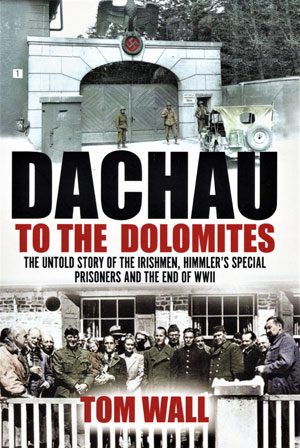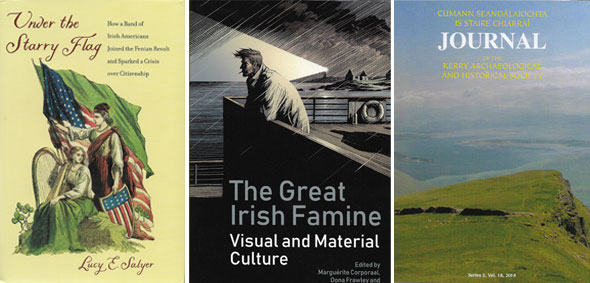BOOKWORM
Published in Book Reviews, Issue 3 (May/June 2019), Reviews, Volume 27By Joe Culley
@TheRealCulls
 In the spring of 1945, as the Nazi high command began to accept that the game was up, they prepared to use one last bargaining chip that they hoped might help to save their own skins. They gathered together a collection of high-value hostages whom they had been holding in various camps across the Reich and brought them to Dachau, outside Munich. There were over 150 such special prisoners from eighteen countries, comprising eminent statesmen (e.g. former French prime minister Léon Blum), aristocrats, RAF officers, opposition German generals and Soviet officials (e.g. Molotov’s nephew).
In the spring of 1945, as the Nazi high command began to accept that the game was up, they prepared to use one last bargaining chip that they hoped might help to save their own skins. They gathered together a collection of high-value hostages whom they had been holding in various camps across the Reich and brought them to Dachau, outside Munich. There were over 150 such special prisoners from eighteen countries, comprising eminent statesmen (e.g. former French prime minister Léon Blum), aristocrats, RAF officers, opposition German generals and Soviet officials (e.g. Molotov’s nephew).
And among them were five Irishmen who had been captured at the start of the war, having missed Dunkirk. Prime among them was John McGrath, the manager of Dublin’s Theatre Royal. Initially the Germans had gathered the Irish together in Sachsenhausen, in the hope of establishing a unit along the lines of the ill-fated Casement Brigade of the First World War. While that didn’t work out (although a few seemed willing to collaborate), they retained their special status.
In the excellent Dachau to the Dolomites: the Irishmen, Himmler’s special prisoners and the end of WWII, Tom Wall, a retired ICTU official, details the story of their long and often harrowing captivity, and recounts the dramatic evacuation from Dachau to a Tyrolian hideaway as the region collapsed into chaos.
Of course, given the very nature of the book we know that most of the hostages survive. A number of them don’t, however, so there is always a frisson of tension and suspense during any threatening encounter. A great read.
Only a few days before the official publication of her book Unfinished business: the politics of ‘dissident’ Irish republicanism, Marisa McGlinchey found herself the go-to source for journalists trying to make sense of the ‘New IRA’ car bomb set off in Derry at the start of the year. It seems that during her years of research McGlinchey managed to gain access to virtually all of the formal organisations and some independent voices. What is their motivation? What are their goals? How do they justify their actions? Needless to say, the answers are varied and nuanced. An important book.
We are told that the 2013 Cambridge history of Australia had just eight entries on the Irish and 42 on the Chinese, yet by 1901 a quarter of the population was Irish and 400,000 Irish had gone to Oz by the 1920s. In A new history of the Irish in Australia, Elizabeth Malcolm and Dianne Hall take a fresh look at the reality of what it meant to be Irish ‘down under’. It is not a general history but rather addresses specific themes, including ‘race, gender, colonialism, popular culture, immigration restriction, eugenics, crime, mental health, employment discrimination, politics, war and religion’. While clearly an academic work, it is quite accessible to the general reader.
Nomad is the extraordinary—indeed, at times scarcely believable—autobiography of Charles John McGuinness, who, as a fifteen-year-old in 1908, set sail from Derry quay for a life of adventure. Between then and 1934, when Nomad first appeared, Charlie had, among other claims, sailed the globe, fought for the British, fought for the Boers, run an IRA active service unit and run guns from Germany during the Treaty negotiations, explored the Antarctic and been a nautical rum-runner during US Prohibition. He also found time to learn to write well, and his tale is a quite entertaining mix of nonchalance and bravado.

In Nicholson: how an angry Irishman became the hero of Delhi, Donal McCracken conducts a reassessment of a man traditionally considered to have been one of the great British field commanders but who more recently has also been accused of racism and almost psychopathic barbarity. (See Stuart Flinders, ‘John Nicholson—the Irishman who became a god’, HI 27.1, Jan./Feb. 2019.) McCracken’s comprehensive work steers a more neutral line in an attempt to discover what made the imposing Nicholson the man he was, a man given to violent rages who nevertheless could become a cult figure even among his Indian troops.
David Ryan tackles the story of another legendary Irishman, but one of a very different hue, in the entertaining Buck Whaley: Ireland’s greatest adventurer. Ryan writes that Whaley ‘would have admitted that he was a wealthy spendthrift and playboy given over to self-indulgence’. Indeed, Whaley managed to squander the equivalent of €100 million in today’s money in the last decades of the eighteenth century, largely through gambling. But there was much more to the ‘buck’ than that, and Ryan relates the tale well.
In 1867, 40 members of the Fenian Brotherhood who were living in the US set sail for Ireland to bring the fight to the British. Unfortunately for them, on arrival they were arrested and tried for treason—but if they were American, how could their actions be considered treasonous? The trial raised radical questions about citizenship and briefly brought the US and Britain to the brink of war. It led to the Expatriation Act of 1868 in the US, which states that ‘the right of expatriation is a natural and inherent right of all people’. Lucy E. Sayler tells the story in the highly readable Under the starry flag: how a band of Irish Americans joined the Fenian revolt and sparked a crisis over citizenship.

Among the twelve fine essays in the handsomely produced The Great Irish Famine: visual and material culture is Bryce Evans’s entertaining account of Liam O’Flaherty’s struggle to get his novel Famine made into a Hollywood blockbuster in time for the centenary of the disaster. (See his ‘The greatest Famine film never made’, HI 25.1, Jan./Feb. 2017.) The essay stars a who’s who of Irish America, from John Ford to Lord Killanin and from Maureen O’Hara to JFK. O’Flaherty’s open contempt for Hollywood did not help matters. Other essays address Tom Murphy and Druid, and ‘The Irish diaspora and the graphic novel’.
The five essays in the newest edition of the Journal of the Kerry Archaeological and Historical Society/Cumann Seandálaíochta is Staire Chiarraí have a West Kerry theme, including an interesting look at smuggling in Dingle in the eighteenth and nineteenth centuries.
Tom Wall, Dachau to the Dolomites: the Irishmen, Himmler’s special prisoners and the end of WWII (Merrion Press, €19.95 pb, 272pp, ISBN 9781785372254).
Marisa McGlinchey, Unfinished business: the politics of ‘dissident’ Irish republicanism (Manchester University Press, £19.99 pb, 256pp, ISBN 9780719096983).
Elizabeth Malcolm and Dianne Hall, A new history of the Irish in Australia (Cork University Press, €25 pb, 234pp, ISBN 9781782053057).
C.J. McGuinness, Nomad: memoirs of an Irish sailor, soldier, pearl-fisher, pirate, gunrunner, rum-runner, rebel and Antarctic explorer (Merdog Books, €13.99 pb, 302pp, ISBN 9781916501607).
Donal P. McCracken, Nicholson: how an angry Irishman became the hero of Delhi (History Press Ireland, £20 pb, 368pp, ISBN 9780750988100).
David Ryan, Buck Whaley: Ireland’s greatest adventurer (Merrion Press, €16.95 pb, 272pp, ISBN 9781785372292).
Lucy E. Salyer, Under the starry flag: how a band of Irish Americans joined the Fenian revolt and sparked a crisis over citizenship (Harvard University Press, €27 hb, 328pp, ISBN 9780674057630).
Marguérite Corporaal, Oona Frawley and Emily Mark FitzGerald (eds), The Great Irish Famine: visual and material culture (Liverpool University Press, £24.95 pb, 296pp, ISBN 9781786941602).
Tony Bergin (ed.), Journal of the Kerry Archaeological and Historical Society/Cumann Seandálaíochta is Staire Chiarraí (97pp, ISBN 9780993428944).
















